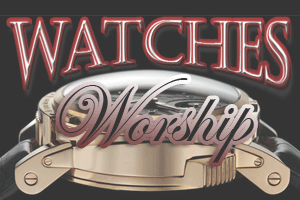Is My Rolex Fake?
How to spot a replica Rolex
Watch lovers and collectors all over the world all have the same fear when it comes to purchasing a used (or even new watch): is this a replica watch? As scammers get more and more sophisticated, it’s getting increasingly difficult to determine if a watch is fake or not.
Watch Repair NY has been trying to educate watch collectors forever about the dangers of buying a used Rolex… you might just be spending a lot of money on a fake Rolex.
How can you protect yourself? The key to buying any collectable watch is arming yourself with knowledge. Although this information is different for all brands, here are some basic things to look for in how to spot a fake Rolex:
Certain Rolex replica watches can be ruled out quickly, Lodowski notes, while more sophisticated replicas may require close inspection. The first step in evaluating a potential fake Rolex timepiece is to check the second hand for a solid sweeping movement without any ticks or other pauses; these would indicate that the Rolex has a quartz movement and is therefore a fake, excepting the brand’s Oysterquartz series.
After the movement, Lodowski recommends testing the crown. Unlike many Rolex replica watches, authentic models will have screw-down crowns sporting the signature Rolex crown logo; under the crown, most models will have a line, although the Submariner and Sea Dweller models, which sport 8mm crowns, will show three dots beneath the logo.
Moving on to the dial, shoppers should examine potential fake Rolex watches for the crisp, clear inscriptions specific to the model in question. Authentic Rolex watches will boast nice coloring and finishings on all inscriptions, Lodowski notes, as Rolex replica watches often reveal themselves through sloppiness in this area. After this, shoppers should check for a transparent case back; authentic Rolex watches do not have glass bottoms on their cases, but this is a feature common among fake Rolex watches that is very rare in vintage Rolexes and unheard of in modern timepieces.
Knowing the provenance of your watch is crucial especially when you are about to drop a ton of money on something that might turn out to be fake.
If you have any misgivings about the watch and you have access to it, it’s a great idea to take it to a reputable jeweler (not a pawn shop), preferably a jeweler that represents the line of watch that you need checked. If you are getting your watch from online, ask the seller to take up-close video of all aspects of the watch so you have something to take to a professional to show.
Barring that, getting high-res, up close images of every single aspect of your watch should not be out of the question. If the seller is unwilling to offer this, then he obviously has an idea of the watch’s dubious provenance.
If you need to learn how to spot a fake Rolex, the best bet is to go by the old maxim: if it’s too good to be true, it probably is.














